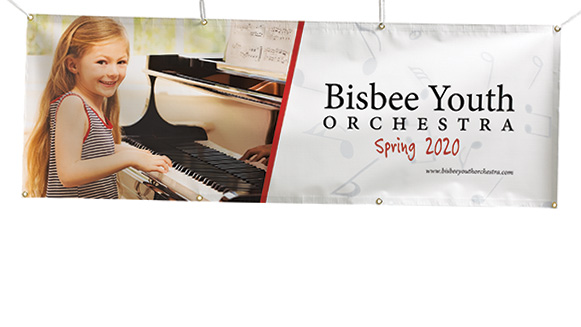Like all industries, the coronavirus pandemic has hit nonprofits hard. Government-mandated shutdowns and stay-at-home orders have forced charitable organizations to cancel and postpone events, the lifeblood of their business. Additionally, funding is drying up as the economic downturn compels people to reconsider their generosity.
But what’s even more difficult is that the odds were already stacked against this promo mainstay. According to Counselor State of the Industry data, total promo sales to nonprofits had decreased from $1.68 billion in 2017 to $1.44 in 2019, a slide of 14%. In addition, nonprofits were contending with a dip in donations due to the Tax Cuts and Jobs Act of 2017, which limited the ability of Americans to earn tax breaks on their charitable gifts by itemizing them as deductions.
As a result, total charity giving declined by 1.7% to $428 billion in 2018, according to the Giving USA Foundation. Adjusted for inflation, individual giving shrank 3.4% – its first decline since 2013, and a strong reversal from the 5.7% increase in individual giving in 2017.
Sales Snapshot
Nonprofits already steadily lost market share the last two years, and the impact of a poor economy should hurt the market even more this year.
Total Market Promo Sales (Billions)
Projected Year-Over-Year Decline
26.5%
Many nonprofits already had a limited budget for promotional products, but now they’re having to reallocate those dollars for staffing and other expenses. “There’s a misconception about the nonprofit market,” says Tim Holliday, co-owner of Sarasota, FL-based Children’s World Uniform Supply (asi/161711), which works with several schools and nonprofit radio stations. “Yes, they’re always giving stuff out, but they often have a tight budget and a revolving door of personnel changes. You’re constantly trying to work through that and establish new relationships.”
Nonprofits have traditionally provided consistent and ample business through month-long observances, annual fundraisers, social media initiatives, disaster giving and other avenues. These charitable organizations rely on branded merchandise to promote their mission to an active audience. Now distributors must get creative with their merch and marketing strategies to create engagement from that lapsed audience and elicit donations.
Columbus, OH-based Z Promotions (asi/365529) is up to the challenge. Instead of delaying fundraisers or scrapping them altogether, the distributor has encouraged clients to hold them online. Rather than giving out participatory T-shirts or thank-you gifts in person, the company can ship tokens of appreciation directly to virtual attendees’ doorsteps.
“We’ve gone back to the drawing board to figure out new ways to serve our clients,” says K. Zulene Adams, CEO of Z Promotions, which has also developed proprietary technology that allows clients to have their own “TV channel” accessible through the distributor’s app on Roku, Amazon Fire or Apple TV. “It takes time because you can’t implement things overnight, but we’re staying the course.”
The increased emphasis on digital marketing and online engagement mirrors the trend of digital donations. Overall online revenue for nonprofits increased by 10% in 2019, up from the 1% bump the year prior, according to the 2020 M+R Benchmarks Study. On average, 39% of donors who sent an online gift to a nonprofit in 2018 sent another to the same nonprofit in 2019.
Online technology has made it easier to reach out to donors and volunteers, but it has also made cybersecurity more important than ever for nonprofits, as evidenced by the surge in webcam covers that Z Promotions has been selling. “With all the hacking stories and database breaches we see on the news, nonprofits want to provide a sense of security to their donors,” Adams says. “It’s our job to help foster that sense of security with tech products and accessories.”
"Being engaged with your community is the best way to break into the market. But it has to be authentic."Asif Jessani, CCS: Marketing & Technology
Dealing with donors, especially obtaining their contact information for shipping products, requires enormous trust from nonprofits. In order to build that trust, distributors must not only deliver consistent, quality service, but also get involved in the organization’s efforts. Asif Jessani, partner at Lawrenceville, GA-based CCS: Marketing & Technology (asi/350474), has volunteered with nearly all his nonprofit clients.
“Being engaged with your community is the best way to break into the market,” Jessani says. “But it has to be authentic. Give back without any expectation. Give back because you care.”
Focusing on causes that resonate with you, attending organization meetings and getting involved on the ground floor before working your way up and making deeper connections with those in charge. That’s how Angela Wojcik, owner of Sardinia, NY-based Chaffee Chick Design (asi/160554), earned the business of her church, local historical society and the National Wild Turkey Federation, of which she’s a committee member. “It’s easier to sell in those close-knit communities because trust and familiarity are already established,” Wojcik says.
Percentage of Overall Promo Industry Sales
To be successful in the nonprofit market, you can’t merely provide T-shirts, jackets and name badges. Sure, Jessani fulfills those orders on a regular basis, but he’s also become a loyal partner to his clients. While some organizations have fully equipped staffs, others consist of an executive director and maybe one or two volunteers. “We take on a chief technology officer or chief marketing officer role,” Jessani says. “We help them brainstorm ideas on how to most effectively reach their audience. We also pride ourselves on ensuring they’re not stressed about graphics – we take care of that for them free of charge.”
Although the landscape of the nonprofit market has certainly changed due to the pandemic, Wojcik, along with many distributors, remains cautiously optimistic about the future. “Social distancing might actually bring more people together after all this passes,” she says. “2020 has been canceled, but 2021, wow, what a party!”



